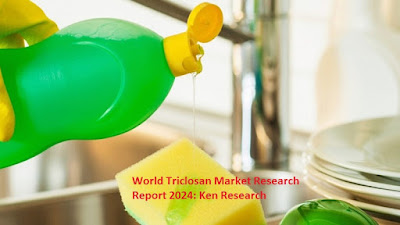Sodium Hexametaphosphate or SHMP is a translucent and solid material. It is a hexamer of composition (NaPO3)6. It is a water-soluble polyphosphate glass which consists of a distribution of polyphosphate chain lengths. Its high grade of solubility sets it apart from other sodium phosphates. It is usually used as an input in the manufacturing of many industrial & consumer products. It is also used in chemical industries as a floatation agent, high-temperature adhesive, dispersing agent, and in the production of titanium dioxide. It is distinguished by four characteristics: grade, P2O5 content, chain length designation, and particle size. The grade is classified as technical grade and food grade. As a food-grade chemical, it is used in the food &beverage industry as a sequestrate or preservative adjunct in beverage, dairy, and other miscellaneous food items.
According to study, “World Sodium Hexametaphosphate (SHMP) Market Research Report 2024(Covering USA, Europe, China, Japan, SEA, and India)” the key companies operating in the world Sodium Hexametaphosphate (SHMP) market are Aditya Birla Chemicals, Prayon, TKI Hrastnik d.d., Mexichem, Weifang Huabo Chemical Co. Ltd., Recochem Inc., Tianrun Chemical, Xingfa, Chengxing Group, Innophos Holdings Inc., Israel Chemicals Limited (ICL), Huaxing Chemical, Xuzhou Tianjia Food Chemical Co., Ltd., Guizhou Sino-Phos Chemical Co. Ltd., Hens, Weiku, KDM, Sichuan Blue Sword Chemical (Group) Co., Ltd., Sundia, Mianyang Aostar Phosphorus Chemical Industry, Kraft Chemical Company Inc., Hubei Xingfa Chemical Group, Nandian Chemical, Jinshi, Chongqing Chuandong Chemical (Group) Co. Ltd., Norwest Chemical, Jinguang, Tianyuan. Key manufacturers are investing to enhance production SHMP in order to meet growing demand from consumers.
Based on product type, the SHMP market is segmented into technical grade and food grade. Food grade is preferred as a texturizer or buffering agent in the manufacturing of milk-based beverages, processed meat, cheese, and many other food & beverage products. Based on the form type, the market is segmented into glassy, granular or flaky and powdered. Based on the application market is segmented into detergents & cleaners, water treatment formulations, titanium dioxide production, water softening, food additive (sequestration, nourishing, quality improvement, preservation, texturization, leavening, thickening, emulsification, etc.) and others. In addition, based on end-use industries, the market is segmented into the paper industry, chemical industry, food & beverage industry, petroleum industry, and others.
The SHMP market is driven by a rise in demand from end-use industries, followed by an increase in awareness for eco-friendly industrial processes and a rise in water treatment plants. However, stringent trade regulations, harmful side effects, and higher consumption cause pancreatic cancer & kidney problems that may impact the market. Moreover, food-grade SHMP must meet the supplies of the Food Chemicals Codex (FCC), which states the quantity of possible toxic contaminants, good manufacturing practices, and pH the range for sodium hexametaphosphate.
Based on geography, China's country holds a major share, followed by Europe in the SHMP market owing to the high presence of manufacturers in the country. China is the largest producer while USA country is the net importer of SHMP. USA country is expected to witness lucrative growth due to the rise in government antidumping taxes on Chinese and European exporters over the forecast period. The global market is projected to grow at a CAGR of approximately 2.8% over the next five years, will reach the US $640 million in 2024, from the US $540 million in 2019.
To Know More, Click On The Link Below:-
Contact Us:-
Ken Research
Ankur Gupta, Head Marketing & Communications
+91-9015378249





